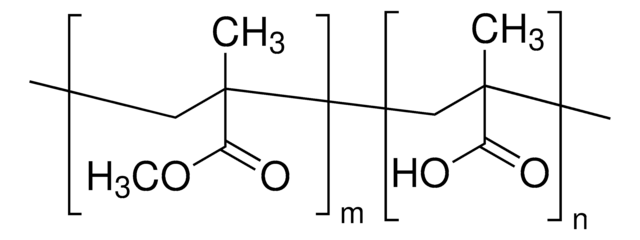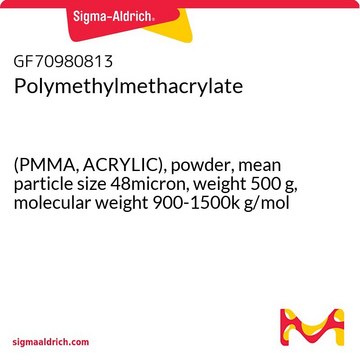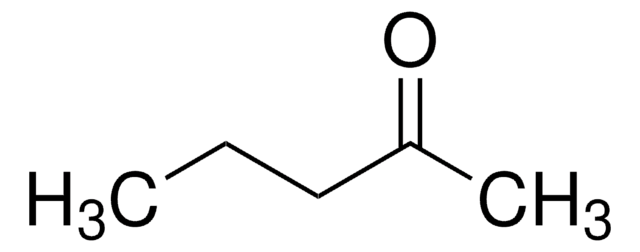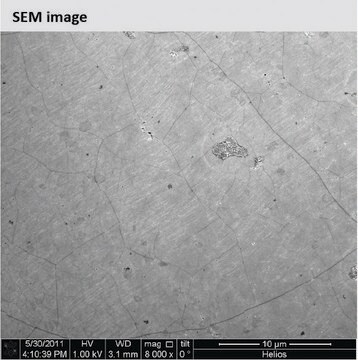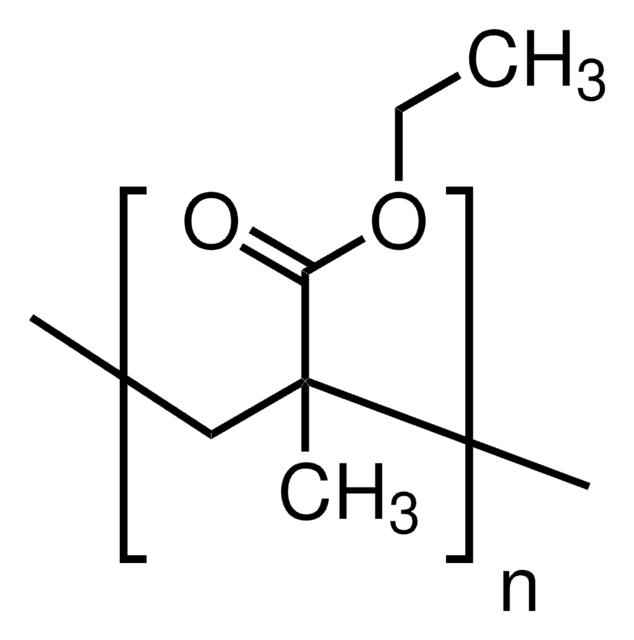182265
Poly(methyl methacrylate)
Sinónimos:
PMMA
About This Item
Productos recomendados
Formulario
solid
Nivel de calidad
temp. de autoignición
580 °F
temperatura de transición
Tg (DSC) 105 °C (midpoint)
solubilidad
H2O: insoluble
densidad
1.200 g/cm3
InChI
1S/C5H9O2/c1-4(2)5(6)7-3/h1-3H3
Clave InChI
PMAMJWJDBDSDHV-UHFFFAOYSA-N
¿Está buscando productos similares? Visita Guía de comparación de productos
Categorías relacionadas
Descripción general
Aplicación
Some studies report its use as
PMMA-titania hybrid optical thins films
PMMA/polystryrene/clay nanocomposites
PMMA/polyurethane/carbon black nanocomposites for methanol fuel cells.
Código de clase de almacenamiento
11 - Combustible Solids
Clase de riesgo para el agua (WGK)
nwg
Equipo de protección personal
Eyeshields, Gloves, type N95 (US)
Elija entre una de las versiones más recientes:
¿Ya tiene este producto?
Encuentre la documentación para los productos que ha comprado recientemente en la Biblioteca de documentos.
Los clientes también vieron
Artículos
Professor Aran (Claremont University, USA) thoroughly discusses the engineering of graphene based materials through careful functionalization of graphene oxide, a solution processable form of graphene.
Developed in the last several years, fluorescence quenching microscopy (FQM) has enabled rapid, inexpensive, and high-fidelity visualization of two-dimensional (2D) materials such as graphene-based sheets and MoS2.
A Review of Mesoporous TiO2 Thin Films
Global Trade Item Number
| Número de referencia del producto (SKU) | GTIN |
|---|---|
| 182265-1KG | 4061838755728 |
| 182265-25G | 4061838755735 |
| 182265-500G | 4061838755742 |
Nuestro equipo de científicos tiene experiencia en todas las áreas de investigación: Ciencias de la vida, Ciencia de los materiales, Síntesis química, Cromatografía, Analítica y muchas otras.
Póngase en contacto con el Servicio técnico
